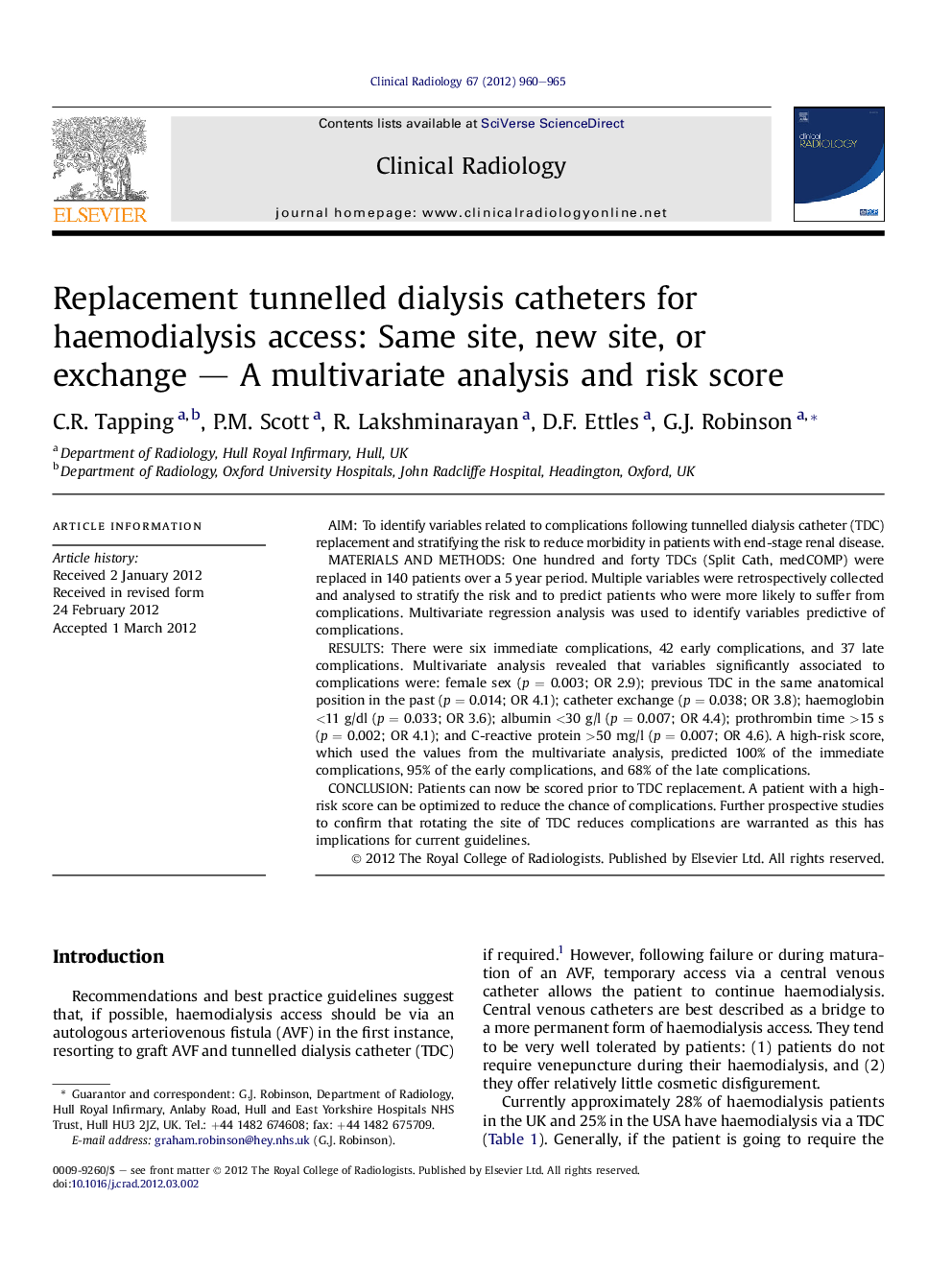| Article ID | Journal | Published Year | Pages | File Type |
|---|---|---|---|---|
| 3983009 | Clinical Radiology | 2012 | 6 Pages |
AimTo identify variables related to complications following tunnelled dialysis catheter (TDC) replacement and stratifying the risk to reduce morbidity in patients with end-stage renal disease.Materials and methodsOne hundred and forty TDCs (Split Cath, medCOMP) were replaced in 140 patients over a 5 year period. Multiple variables were retrospectively collected and analysed to stratify the risk and to predict patients who were more likely to suffer from complications. Multivariate regression analysis was used to identify variables predictive of complications.ResultsThere were six immediate complications, 42 early complications, and 37 late complications. Multivariate analysis revealed that variables significantly associated to complications were: female sex (p = 0.003; OR 2.9); previous TDC in the same anatomical position in the past (p = 0.014; OR 4.1); catheter exchange (p = 0.038; OR 3.8); haemoglobin <11 g/dl (p = 0.033; OR 3.6); albumin <30 g/l (p = 0.007; OR 4.4); prothrombin time >15 s (p = 0.002; OR 4.1); and C-reactive protein >50 mg/l (p = 0.007; OR 4.6). A high-risk score, which used the values from the multivariate analysis, predicted 100% of the immediate complications, 95% of the early complications, and 68% of the late complications.ConclusionPatients can now be scored prior to TDC replacement. A patient with a high-risk score can be optimized to reduce the chance of complications. Further prospective studies to confirm that rotating the site of TDC reduces complications are warranted as this has implications for current guidelines.
